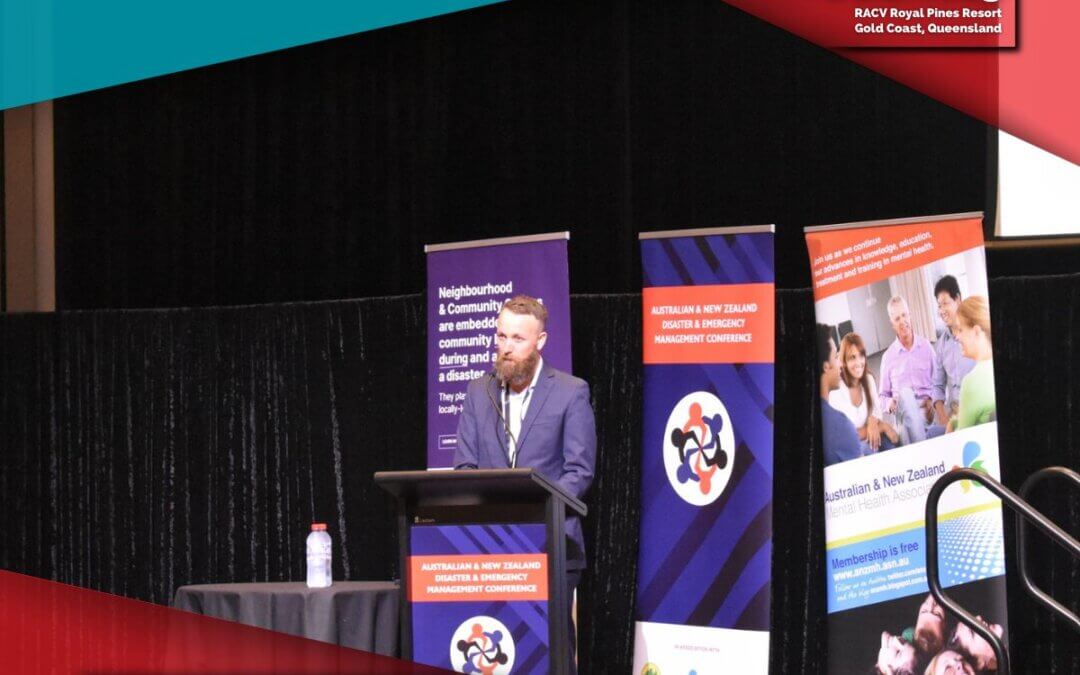Rob Sutton, Managing Director
ing
Presentation to the Disaster and Emergency Management Conference 2023
During this presentation, I will discuss, in general terms, how drone technology can enhance emergency management. I will then talk about bushfire management as a specific use case, and examine the challenges which are currently preventing wider use of drones in this application in Australia.
Who we are
Mirragin is a drone consultancy: we specialise in helping Defence and Emergency Services organisations successfully implement their own drone programs. For example, we’ve been working with the Australian Army, who are the largest and safest drone operator within Australia, on their drone strategy, including demonstrating drone swarming at scale.
We are passionate about drones, because they can be used to increase capability, to reduce costs and crucially, to save lives.
There are three key messages I wanted to convey in this brief:
a. Drones have a wide variety of applications, and they are being used across the world for Disaster and Emergency Management, today.
b. As a specific use case, there is enormous benefit in using drones in Australia for bushfire management, however
c. There are some challenges to overcome before we get there.
Applications
I will open by playing a video given to me to play at this conference by Charles Werner. Charles is based in the United States, and is a former Fire Chief Emeritus from Charlottesville, Virginia. He is now the director of DRONE RESPONDERS, who are a non-profit organisation dedicated to supporting the use of drones in public safety. You can find it at www.droneresponders.org, or I can help to connect you if you wish to join.
We can see from Charles’ video that the applications for drone usage in emergency management is quite wide. Applications could include:
- Immediate situational awareness
- Search and rescue
- Application of water or foam
- Aerial logistics support (e.g. dropping food and water or first aid)
- Providing warnings and communication
- Communications extension
- Fire monitoring and detection
- Fire management
I will now talk about the specific application of bushfire management, to identify some of the issues that are preventing wider use.
Bushfire management in Australia
In December 2019, Australia burned.
Continent scale fires burned through over 24 million hectares, killed 33 people and injured dozens more, and destroyed over 3,000 homes. Aside from the multi-billion dollar cost of the damage, there are other, indirect impacts, such as over $50m a day in economic disruptions, ongoing impacts to health from hazardous air pollution, and the death or displacement of over three billion animals, pushing some species to the brink of extinction.
The hottest global temperature ever recorded occurred on Tuesday last week, which topped a record set only the previous day. Hotter temperatures make fires more volatile and harder to fight, and this situation will continue to get worse as a result of global heating. Meanwhile, extended drought conditions across Australia have meant that vegetation is dry and fire-prone, even in areas which are normally protected from fire.
Longer fire seasons, larger fires and more difficult conditions will continue to see resources of all kinds stretched paper thin.
Prevention has always been better than cure. Investing in mitigation would save significant amounts of public and private funds being used to fight fires and reduce the associated costs to the economy, to the environment, and to people’s lives.
So, other than taking action on climate change, how can we work to reduce the likelihood that fires occur in the first place, or reduce the consequences once they do occur?
Drones should be an essential part of the answer.
Drones can monitor wide areas, by day and by night, to spot if a fire has broken out. This enables emergency authorities to rapidly respond to each incident, before the fire gets too large to manage. Drones can be used to manage and monitor existing fires. Drones with thermal cameras can fly where crewed aviation cannot, such as through dense smoke, or at night, which is the best time to fight fires. Drones give a greater situational awareness that allows decision makers to allocate scarce resources to the areas of priority, which enhances firefighter safety and has the greatest impact.
In order to maximise the use of scarce fire fighting resources within Australia, and to remove fire-fighters and aircrew from unnecessary risk of harm, drones are an essential part of the answer. However, this capability cannot simply be purchased from the market – a deliberate program needs to be set up to ensure that air vehicles are available with the right equipment, in the right place, at the right time. A central command and control network (across organisations) is also essential.
A Royal Commission into the 2019/2020 bushfires was announced in February 2020, and a report published on 28 October 2020. Chapter 8 of this report specifically examined national aerial firefighting capabilities and arrangements, including aerial drones. The report identified that drones are not currently used for direct firefighting, but that they can be used to live stream the location and behaviour of bushfires. The report identified that drones can operate in conditions which may be unsafe for other aircraft such as in low light or during the night. The report stated that drone integration into the wider firefighting effort is immature, and as far as I understand in 2023 this is still the case. The report also identified that short contracts and minimal work during the off season made it unviable to invest in the procurement and development of aerial firefighting solutions, and that a sovereign aerial firefighting capability was necessary.
A separate survey conducted by the National Aerial Firefighting Centre in August 2020 identified that drone operations are limited by fusion of data into a common operating picture, integration of crewed and uncrewed aviation assets into a shared airspace, regulatory limitations, and keeping pace with rapidly evolving technology. In particular, data fusion allows a shared understanding of the situation, and more effective command and control in response to changes to the fire activity.
Many of these problems require solutions which are not able to be solved by individual service providers. Accordingly, solutions will require dedicated funding within a national body to ensure that Australia can develop and maintain the appropriate capability. Drone operators need to be trained, and appropriate safety management and procedural frameworks need to be put in place to ensure that drones can be safely integrated into fire-fighting operations. An appropriate entity to perform this work may be the National Aerial Firefighting Centre. The NAFC has already commenced work on a program designed to address a national approach to developing drone capability and capacity, however this program does not yet seem to have delivered any outcomes other than the survey mentioned previously.
Our recommendations to address these challenges are therefore threefold:
- That the NAFC continue to pursue their program to address a national approach to the development of drone capability and capacity (including drone regulation).
- That the Australian government should develop a common operating picture for drone use by emergency services. This should include the underlying architecture to enable “plug and play” of new drone capabilities, and interoperability with state emergency management communication networks to enable rapid dissemination of data (this is per Recommendation 6.3 of the Royal Commission Report).
- That the Australian government should greatly increase the capability of the NAFC to procure and deploy sovereign drone capabilities within Australia, to help to manage what is becoming a more and more difficult fire-fighting season, and to help to keep our first responders and at-risk communities safe from harm (this is per Recommendation 8.3 of the Royal Commission Report).
Closure
In summary, there is a significant opportunity to enhance emergency management through the use of drone technology. Drones can enable first responders to achieve more with the resources they have, and importantly, can be used to keep precious human life out of harm’s way. For emergency management, the range of applications is very wide, including applications such as situational awareness, search and rescue, aerial logistics and communications extension.
For bushfire management in Australia, drones can be used for early detection of bushfires as well as enhanced management of bushfires once they occur. There are however several obstacles to adoption of this technology. A focus on provision of a common operating picture architecture and revised procurement processes for drones will help to address these challenges, and to grow a sovereign aerial firefighting capability.
As an awareness tool, we have developed the Australian Drone Ecosystem Directory for you to see who all the drone organisations are within Australia. It is from the basis of these organisations that a sovereign uncrewed aerial firefighting capability can be developed.
I’ll leave with a thought: As the climate changes, Australia will burn again, and we need to be ready. Drones are an essential part of the answer.

Written by Rob Sutton, Managing Director – Mirragin

